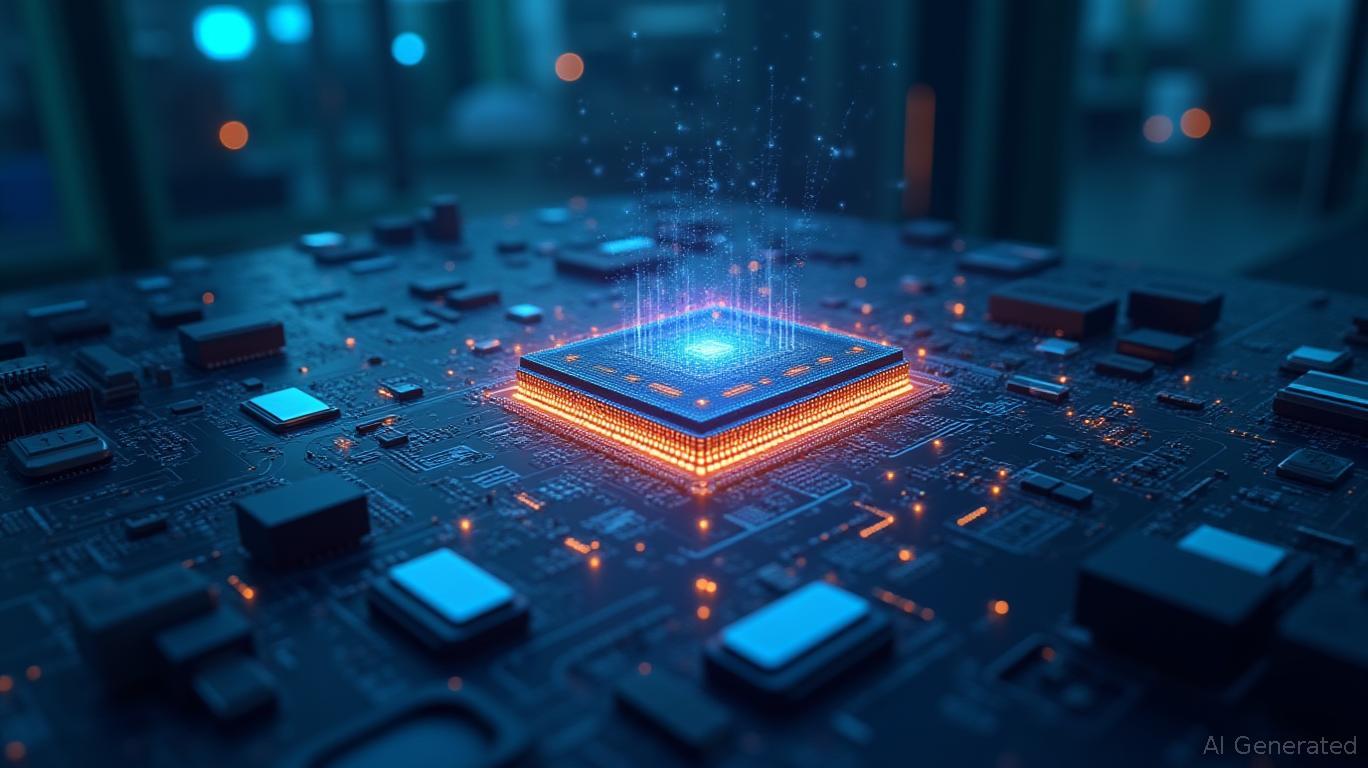The AI-Driven Semiconductor Revolution: How Keysight and Synopsys Are Redefining RF Design Efficiency
The semiconductor industry is in the throes of a transformation driven by the relentless demand for faster, smaller, and more power-efficient chips. As 5G networks expand, 6G research accelerates, and
devices proliferate, the race to harness advanced process nodes like TSMC's N4P has never been more critical. Enter Keysight Technologies (KEYS) and Synopsys (SNPS), whose collaboration with TSMC on an AI-powered RF design migration flow could redefine how semiconductors are designed—and who will dominate the next era of chip innovation.
The Strategic Imperative: Why RF Design Migration Matters
Traditional RF design cycles are notoriously time-consuming and error-prone. Migrating existing designs to smaller nodes like N4P requires re-optimizing layouts, recalibrating electromagnetic (EM) simulations, and addressing layout-dependent effects—a process that can take months and consume vast engineering resources. Keysight and Synopsys' AI-driven flow tackles this bottleneck head-on. By automating parameterization (via Keysight's RFPro) and leveraging AI to predict optimal design parameters (via Synopsys' ASO.ai), the collaboration reduces redesign cycles from weeks to days. This not only cuts costs but also enables companies to bring high-performance wireless chips to market faster, a decisive edge in a sector where first-mover advantage is everything.
The Technology Stack: How It Works—and Why It's a Game-Changer
At its core, the flow integrates three pillars:
1. AI-Driven Optimization: Synopsys' ASO.ai uses machine learning to analyze design constraints and rapidly converge on optimal solutions, slashing trial-and-error cycles.
2. Automated EM Simulation: Keysight's RFPro eliminates manual re-creation of passive components (e.g., inductors) for new process nodes, ensuring designs comply with TSMC's N4P rules.
3. Multiphysics Verification: Tools like Ansys' RaptorX and Exalto handle complex interactions between electrical, thermal, and mechanical factors—a necessity for millimeter-wave and sub-THz designs.
The result? A streamlined workflow that integrates layout design (Custom Compiler), circuit simulation (PrimeSim), and physical verification (StarRC/IC Validator) into a cohesive AI-augmented pipeline. For chip designers, this means fewer design iterations, lower risk of silicon failures, and better utilization of N4P's 4nm FinFET architecture to achieve superior power, performance, and area (PPA) metrics.
Market Impact: Who Wins in This New Paradigm?
The stakes are high. Companies like Qualcomm, Intel, and NVIDIA, which depend on cutting-edge RF chips for 5G base stations, AI accelerators, and automotive systems, are under pressure to leverage advanced nodes like N4P. The Keysight-Synopsys flow lowers the barrier to entry by making migration feasible for even mid-tier players. This democratizes access to next-gen semiconductor capabilities, potentially reshaping supplier relationships and market share dynamics.
For investors, the implications are clear:
- Keysight and Synopsys: Their AI-driven tools are becoming critical infrastructure for the semiconductor ecosystem. As demand for advanced nodes surges, their revenue streams from licenses and services are likely to grow disproportionately.
- TSMC: The partnership validates its leadership in analog design migration (ADM) methodologies, reinforcing its position as the preferred foundry for RF-intensive designs.
- End-Users: Companies adopting this flow can accelerate product launches, from 6G transceivers to smart IoT sensors, fueling broader industry growth.
Risks and Considerations
While the collaboration is a major step forward, challenges remain. The complexity of AI integration requires skilled engineers, and over-reliance on automation could lead to blind spots if models aren't rigorously validated. Additionally, competition from rivals like Cadence Design Systems (CDNS) and Ansys (ANSS) is intensifying. Investors should monitor the adoption rate of the N4P flow and the firms' R&D spending to gauge long-term staying power.
Investment Thesis: A Structural Tailwind for EDA and Test Leaders
The Keysight-Synopsys partnership isn't just about a single technology—it's a glimpse into the future of semiconductor design. As AI and advanced nodes become table stakes for competitiveness, companies that control these tools will enjoy pricing power and recurring revenue.
Recommendation:
- Buy Synopsys (SNPS): Its AI-first strategy and deep partnerships with foundries position it as a leader in the next wave of design automation. A P/E ratio of ~35 (vs. a 5-year average of ~30) suggests some premium, but the long-term opportunity justifies it.
- Hold Keysight (KEYS): Its test-and-measurement expertise is irreplaceable, but its valuation at ~25x forward earnings may require patience. Investors should look for dips below $170 to add exposure.
The semiconductor industry is entering an AI-powered golden age. For those positioned to ride this wave, the rewards will be immense.

Comments
No comments yet